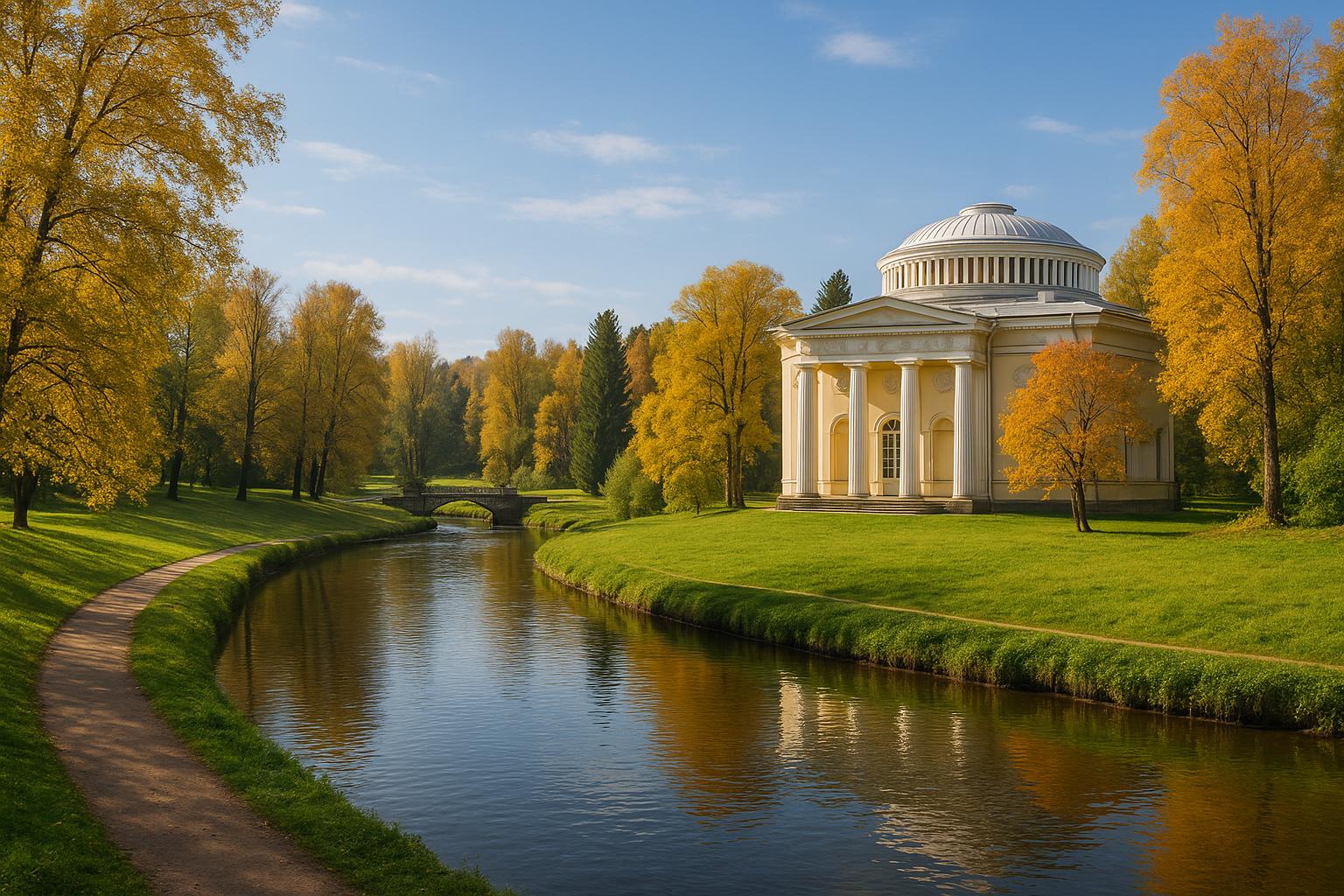Pavlovsk Park: An Overview
Pavlovsk Park stands as a historical gem situated approximately 27 kilometers from St. Petersburg, Russia. This exceptional landscape setting beautifully complements the Pavlovsk Palace, representing a significant period of landscape gardening that spans from the late 18th to the early 19th centuries. Covering an expansive area of roughly 600 hectares, Pavlovsk Park is one of the region’s largest parks, offering a rich tapestry of history and natural splendor.
History of Pavlovsk Park
The genesis of Pavlovsk Park dates back to the period between 1777 and 1828 when it was developed as a personal residence for the Russian imperial family. The park’s creation began under the aegis of Catherine the Great, who endowed her son, Grand Duke Paul Petrovich—the future Emperor Paul I—with the palace and garden. An assemblage of architects and landscape designers, including noteworthy figures like Charles Cameron, Vincenzo Brenna, and Carlo Rossi, played pivotal roles in shaping the park’s stunning vista.
Development Phases
The initial design of Pavlovsk Park can be credited to Charles Cameron. His approach intertwined principles gleaned from England’s picturesque landscape movement, adeptly merging natural and geometric elements to craft a distinctive and harmonious environment. As the project progressed, landscape designer Pietro Gonzaga contributed significantly by extending the park and accentuating its naturalistic aesthetics, thereby enhancing its allure and depth.
Features and Attractions
Within the realms of Pavlovsk Park lie myriad attractions that offer visitors a harmonious blend of cultural enrichment and natural exploration. From architectural wonders to serene artificial water bodies, the park is a haven for those seeking diverse experiences.
The Palace
Dominating the park’s landscape is the Pavlovsk Palace, an exquisite example of neoclassical architecture that embodies the sophistication and opulence of 18th-century Russian styles. The palace is not just an architectural marvel but also houses an extensive array of art collections and period furnishings, providing a window into the artistic and cultural narratives of its era.
Gardens and Monuments
Pavlovsk Park is celebrated for its extensive gardens and thoughtfully designed landscapes. Among its prominent features are the Rose Pavilion, the Aviary, and the Temple of Friendship. These structures, strategically nestled amidst lush forestry and sprawling meadows, create picturesque settings that captivate the imagination and spirit.
Rivers and Streams
A defining element of Pavlovsk Park’s landscape is the Slavyanka River, which gracefully winds its way through the park. This natural riverine feature, coupled with several ponds and artificial lakes, enhances the park’s tranquil atmosphere, providing a serene backdrop that underscores its picturesque quality.
Conservation and Modern-Day Use
Today, Pavlovsk Park serves dual purposes as both a public cultural site and a conservation area. Ongoing efforts focus on maintaining the integrity of its historical and natural elements, ensuring that the park continues to thrive as a testament to its storied past. Open to the public year-round, the park extends an array of recreational activities, guided tours, and seasonal events. For those seeking additional details, more information is available on the official tourism website of Saint Petersburg.
Visitor Information
Visitors planning a sojourn to Pavlovsk Park will find it accessible via public transportation from St. Petersburg. The park remains open throughout the year, with operating hours that vary according to the season. While entrance fees may apply, these often depend on the specific activities and sites within the park visitors wish to explore.
Conclusion
Ultimately, Pavlovsk Park stands as a testament to Russia’s magnificent cultural heritage, offering a sanctuary of natural beauty and tranquility. As a significant cultural and historical landmark, it continues to draw visitors from across the globe, providing an enriching experience that bridges the past and present with elegance and grace.

